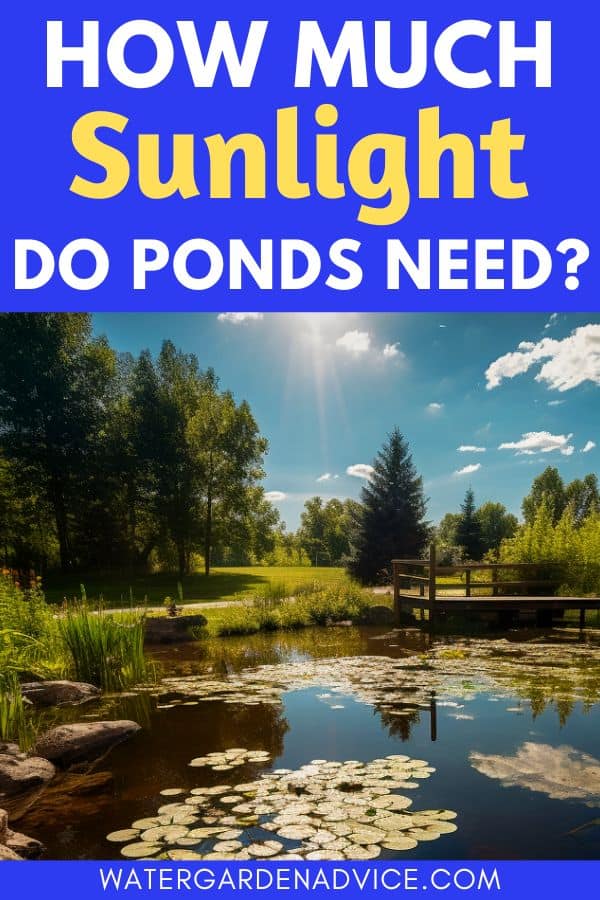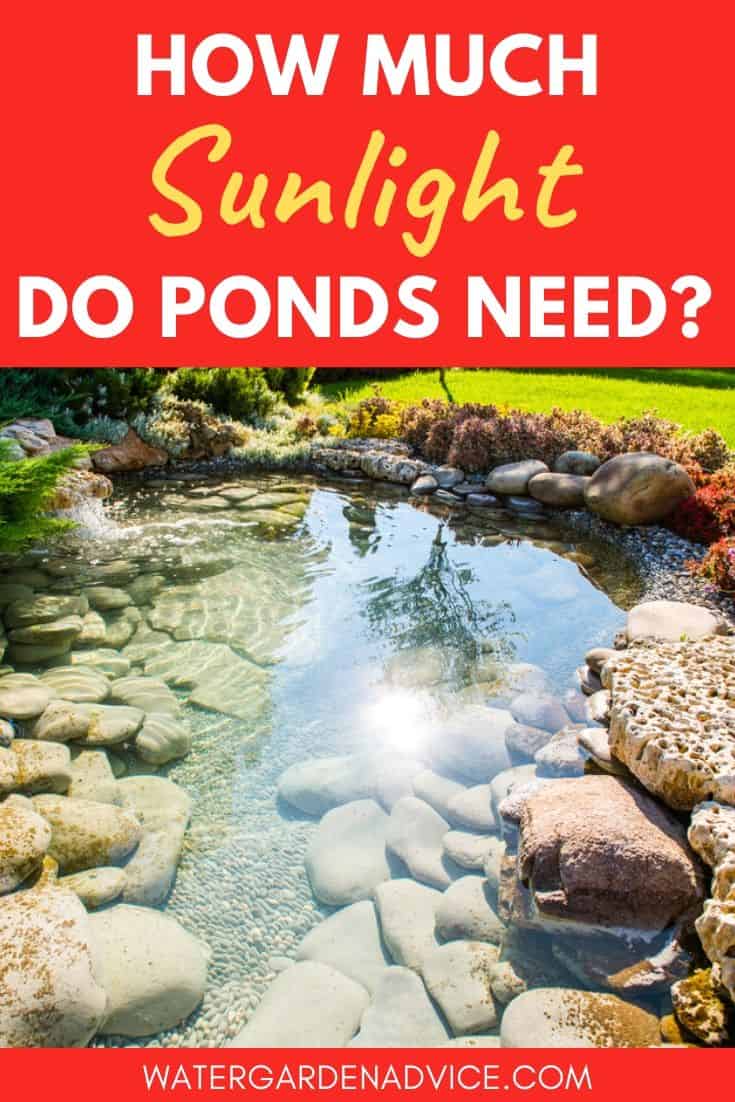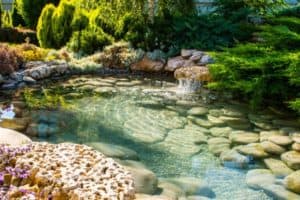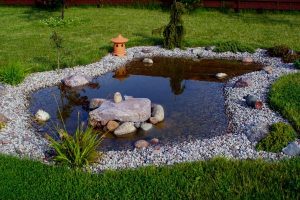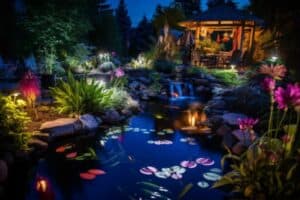Sunlight is essential for healthy fish and pond plants, but how much sun is too much?
In this article I’ll tell you how much sunlight is needed for a healthy garden pond and some easy ways to provide shade if your pond is positioned in full sun.
This post about sunlight for ponds contains affiliate links. Please read the disclosure for more info.
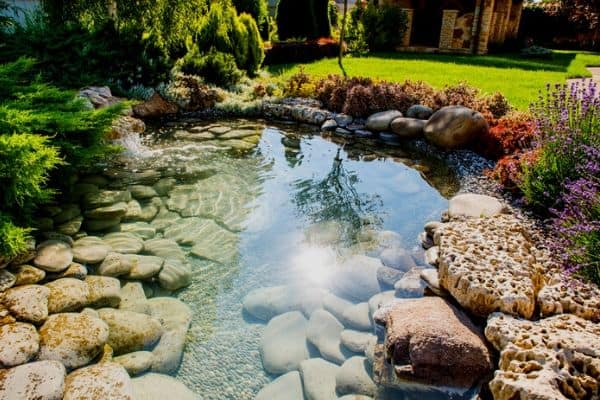
How much sunlight do ponds need?
4 to 6 hours of sunlight daily is ideal for garden ponds. Most pond plants will grow well with this amount of sunlight.
In areas with hot summer temperatures, its best if the pond is positioned so that it receives morning sun and afternoon shade to avoid the pond water heating up too much.
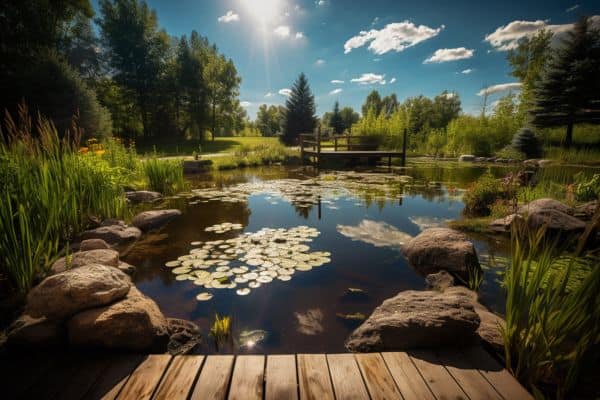
BENEFITS OF SUNLIGHT FOR PONDS
Brings out fish colors
Sunlight helps to enhance the color of fish, especially koi. It normally takes about two months of regular sun exposure for koi’s colors to brighten up. [1]
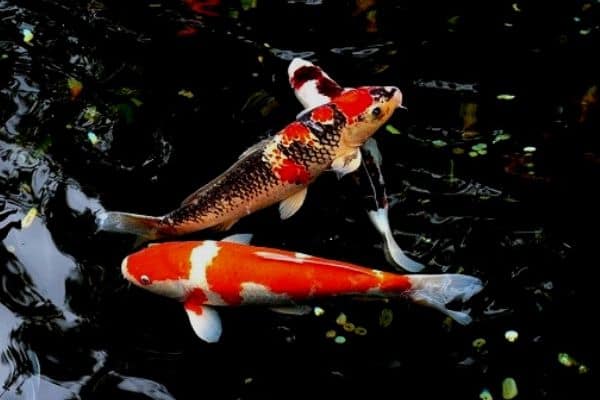
Plant growth
Sunlight is also essential for aquatic plants to grow. Pond plants need sunlight for photosynthesis; the process that plants use to make oxygen and nutrients.
Some aquatic plants like pennywort can survive with minimal sunlight but popular pond plants like water lilies
and lotus
need at least 5 to 6 hours of direct sunlight each day to
flower well.
Warms the pond in cold weather
During the cold winter months, sunlight helps to keep the pond water at a comfortable temperature for the fish and may prevent the surface of the pond freezing.
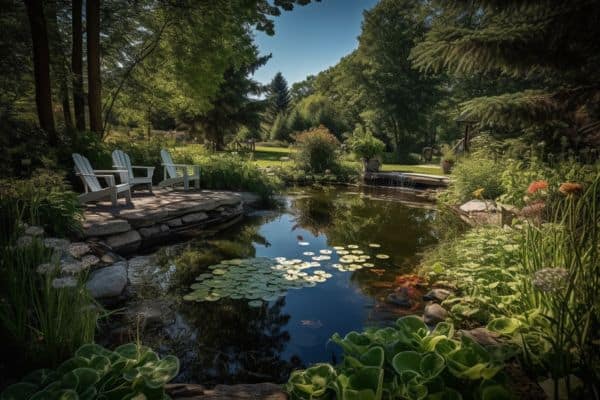
DISADVANTAGES OF SUNLIGHT FOR PONDS
Increased water temperature
Backyard ponds that are exposed to direct sunlight can heat up quickly during hot summer weather.
Once the water temperature passes 85 degrees Fahrenheit (29 degrees Celsius), the amount of available oxygen in the water becomes dangerously low, which can be fatal for fish.
If you see your fish gasping for air at the surface of the pond or looking distressed on a hot summer day, it’s time to take action to cool down the water.
You can drain 10% of the pond water and replace it with fresh, cool water. Just remember to dechlorinate the water if your tap water is chlorinated.

Sunburn
Fish can get burned by the sun, just like us.
Sunburn is most common in overcrowded and shallow ponds, where the fish are swimming close to the surface.
Algae overgrowth
Sunlight can also lead to algae blooms because warm water enables algae to grow thick and fast.
It’s best to reduce the amount of food you feed your fish during summer to encourage them to eat the algae.
Evaporation
Direct sunlight also increases evaporation, so you’ll need to top up your pond more often in summer.
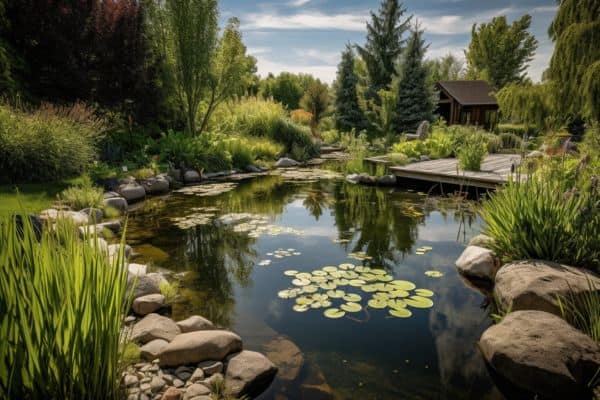
HOW TO MANAGE SUNLIGHT FOR YOUR POND
Plants
Aquatic plants with
large leaves like water lilies are great for providing shade for the pond.
Floating plants like water hyacinth or water lettuce
that float on the surface of the pond are also
good options.
Providing shade
You can install a shade sail over the pond or use a large garden umbrella
to reduce the amount of
sunlight the pond receives.
A fish cave will
provide a place for the fish to retreat to during hot weather and somewhere for
the fish to hide from predators.
You can also add blue pond tint to the pond to help reduce the sun’s UV rays and give your pond a healthy blue appearance.
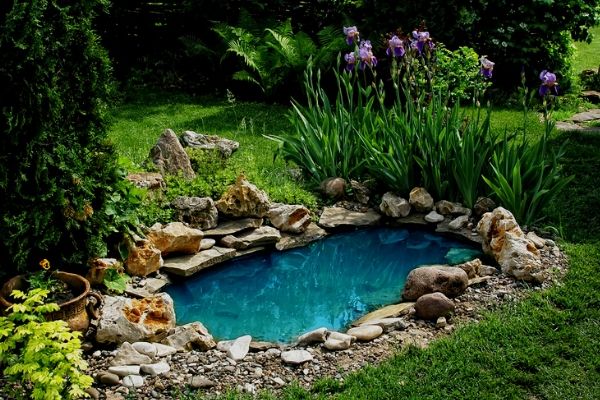
So there are my tips for managing sunlight for ponds.
With the right balance of sun and shade, you can ensure that your fish and pond plants stay happy and healthy over the summer months.
How do you get the right balance of sunlight for your garden pond? Let me know in the comments below.
Are you on Pinterest? I have boards dedicated to Backyard Ponds and Pond Ideas that you may enjoy.
